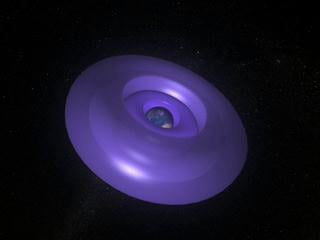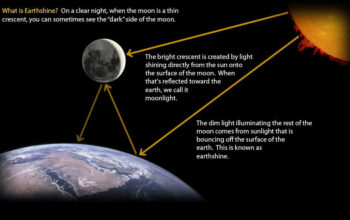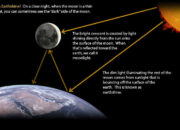In the vast expanse of our universe, myriad phenomena await discovery, holding secrets that could fundamentally alter our comprehension of cosmic mechanics. Among these phenomena is a peculiar sound—an enigmatic “hiss” that reverberates through the backdrop of ethereal space. This auditory mystery, unveiled by the study of chorus waves, has captivated the attention of astrophysicists and enthusiasts alike. The CHORUS (CHevron Rado-Undividualized User Stimulus) satellite has provided unprecedented insights into these celestial sounds, contributing to our understanding of Earth’s magnetosphere and beyond.
CHORUS, a sophisticated instrument designed to capture the subtle nuances of various plasma waves, elucidates a fascinating aspect of space physics. It operates by harnessing the power of electromagnetic waves generated in the vicinity of planets, predominantly within the ionosphere and magnetosphere. The satellite’s capability to detect chorus waves transforms our traditional viewpoint of space from a visually dominated realm to an auditory landscape, inviting us to listen to what was once a silent universe.
The origins of the chorus waves can be traced back to the interactions between charged particles, such as electrons and protons, and the magnetic fields of celestial bodies. These particles, energized by solar winds, collide and generate emissions across a spectrum of frequencies, audibly manifesting as a broad range of sounds, including the distinctive hiss. Researchers have long theorized about the implications of these sounds in the broader context of space weather and its effects on satellite communications and even, potentially, on human technology on Earth.
One of the most significant revelations brought forth by the CHORUS mission is the correlation between these elusive sounds and the dynamics of space weather. As solar storms bombard the Earth’s magnetosphere, they can induce tumultuous changes, affecting communications and navigation systems. The chorus waves serve as harbingers of such solar activity, offering observational data that can enhance predictive models. This shift in perspective not only broadens our understanding of the interplay between solar emissions and Earth’s environment but also heightens our awareness of the potential ramifications on our technological infrastructure.
The meticulous observation of these sounds raises an intriguing question: do cosmic sounds possess rhythms and patterns that may be analogous to music? The concept of space music is already a part of science fractal realities. The harmonic structure inherent in the chorus waves has sparked the interest of both scientists and artists. The melodic patterns identified resonate with the human experience, bridging the gap between science and the arts. This fusion sparks creativity, prompting the creation of compositions that sonically reflect the elusive nature of the cosmos.
It is essential to appreciate the technological feats that make this auditory exploration possible. The advanced sensors aboard the CHORUS satellite are remarkable; they enable scientists to filter out relevant frequencies from the cacophony of cosmic noise. Employing Fourier transform techniques and sophisticated signal processing algorithms, researchers can transmute these emissions into discernible audio streams, allowing the hidden melodies of the universe to emerge. This data is not only significant for academic inquiry but also for potential educational outreach, as the sounds of space can captivate the imagination of learners at all levels.
Moreover, the interrogation of chorus waves propels the frontiers of human knowledge. The physical mechanisms underlying these phenomena draw attention to the more extensive field of magnetohydrodynamics. Understanding how plasma behaves in the magnetic confines surrounding celestial bodies allows scientists to refine their models on plasma turbulence, wave propagation, and energy transfer. Each spectrum of sound captured can reveal the intricate dance of particles across varying frequencies, providing invaluable snippets of interstellar communication.
With every passing day, the hopes of unraveling the enigma of the cosmic hiss grow more pronounced. As scientists analyze the data retrieved from the satellite, they find themselves emboldened by the prospect of groundbreaking discoveries. Can these sounds reveal more about the shape and dynamics of the magnetic fields? Will there be a definitive link drawn between the observed waves and the phenomena of space storms? Such questions linger at the forefront of astrophysics, spurring a new wave of inquiry.
In a broader philosophical sense, the exploration of chorus waves prompts profound reflections on humanity’s place within the universe. How do these sounds influence our understanding of existence, our intrinsic connection to the cosmos? They serve as a reminder of the vastness that lies beyond our immediate reach and the wonders that remain shrouded in mystery. In the quest to decode the “language” of the universe, we confront our own limitations while simultaneously igniting our curiosity and drive to explore further.
Emerging from the whispers of this cosmic orchestra is a call to action; it beckons individuals from diverse disciplines—physicists, artists, engineers, and educators—to collaborate and further this quest for knowledge. The allure of the chorus waves extends well beyond the scientific frontier; it creates a narrative that invites society to participate in the marvels of cosmic exploration. Every oscillation heard carries the potential to alter how we conceive of our universe and our role in it.
In conclusion, the CHORUS satellite, through its groundbreaking exploration of space hiss, revitalizes our understanding of the interactive tapestry woven by solar activity, planetary atmospheres, and the expansive cosmos. This subtle sound underscores the symphonic nature of the universe, where frequencies converge and diverge, resulting in a rich auditory palette. As this frontier continues to unfold, it promises not only to deepen our scientific insights but also to enrich the cultural significance of our shared human experience. Indeed, the mysteries of the cosmos echo within us, urging us to listen, to learn, and to marvel at the astounding wonders of existence.








